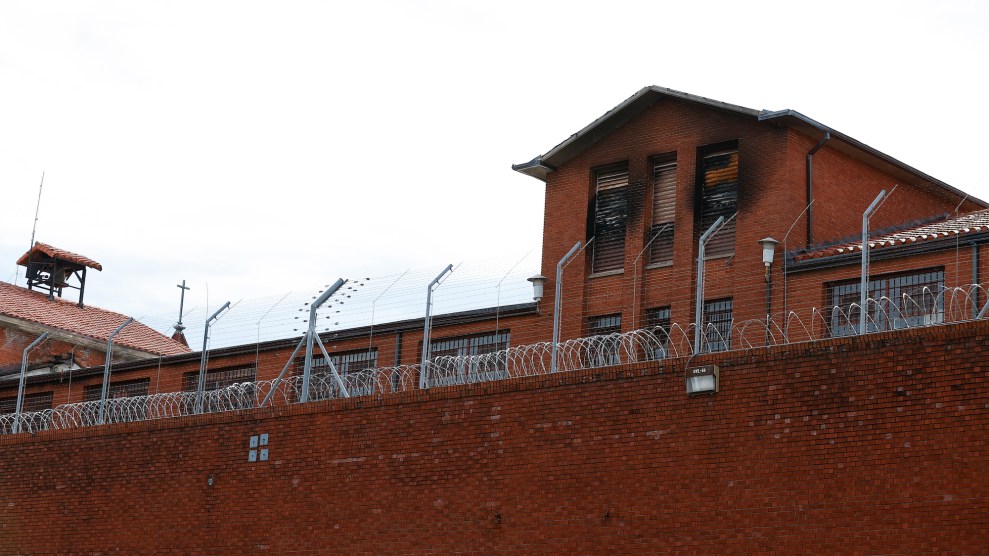Article created by Foreign Policy in Focus.
Under the Bush administration, foreign policy issues such as warrantless wiretaps, the rights of enemy combatants, and interrogation methods have become the latest topics in the longstanding debate over the limits of executive branch power and the role of the judiciary in enforcing those limits. The issue recently took center stage when Senate Democrats expressed concern at the confirmation hearings of Samuel Alito, President Bush’s most recent pick for the Supreme Court, that Alito would support greater judicial deference to executive authority.
In Federalist #78, Alexander Hamilton referred to the judiciary as “the least dangerous branch” of government. This was true, Hamilton reasoned, because the judiciary had neither “force nor will.” Since Congress held the power of the purse, and the executive the power of the sword, the judicial branch of government was in the weakest position to threaten the interests of citizens.
In the more than 200 years since Hamilton made his case, the federal judiciary has grown in size and scope and is often regarded as serving a crucial function as the stopgap on excessive legislative and executive power. Many citizens look back over the 20 th century and see the Supreme Court championing individual freedoms and standing in the way of government abuse of power. Indeed, when I teach Constitutional Law, I am always struck by the degree of confidence students place in Supreme Court decisions as though they are self-executing, self-enforcing, and provide some mystical transformation of political interaction. Left-leaning students in particular seem to assume that the Supreme Court has rallied behind progressive causes and reined in executive and legislative power.
The Supreme Court
The actual role of the Supreme Court in American history is more modest and its decisions are as likely to reinforce excessive acts of legislative and executive power as to challenge them. As it turns out, Hamilton ‘s assumptions are quite accurate. The Supreme Court must rely on the other branches of government to enforce its decisions and as an unelected body that must react to cases brought before it, the Court is highly constrained in the issues it can address. A brief look at cases involving executive power reveals few instances in which the court bucked the status quo. The best we can say about Supreme Court rulings in this area is that they have, on occasion, drawn some loose boundaries around presidential authority. However, in the absence of clear congressional opposition to executive action, the Supreme Court has largely affirmed broad discretion, particularly in times of war or other national security crises. This is not surprising since the Constitution provides specific powers to both Congress and the executive in these areas but grants no such direct authority to the Supreme Court.
In one of its most famous and notorious sanctions of executive power, Korematsu v. U.S.(1941), the Supreme Court refused to hold unconstitutional President Roosevelt’s Executive Order interning Japanese citizens. While this case has been roundly criticized by citizens and government officials alike, the Supreme Court has never overturned the precedent or the presumption that wartime expands executive authority. Even a case widely recognized for imposing limitations on executive power, Youngstown Sheet and Tube v. Sawyer(1952), does little to draw clear boundaries in the absence of congressional disapproval. The decision, which involved President Truman’s seizure of privately owned steel mills to keep labor disputes from disrupting steel production during the Korean War, struck down Truman’s actions as a violation of the president’s constitutional authority. However, in that case, Congress had specifically considered and rejected providing the president with this method of resolving labor disputes. The decision, then, can be seen as much as a reaffirmation of congressional decision-making as an example of the Supreme Court’s willingness to reign in exuberant executives. The court explicitly acknowledged that executive power is at its lowest ebb when it acts contrary to congressional intent and without clear constitutional authorization. But this leaves the field wide open because Congress often provides authorization for executives to act in the interest of national security and because presidents have long laid claim to inherent powers in matters of foreign policy and national security. In fact, in United States v. Curtiss-Wright Corp. (1936), the Supreme Court went out of its way to declare that the president has broader authority when he acts in foreign matters than in domestic ones.
Some see the court’s ruling in Hamdi v. Rumsfeld (2004) as a sincere curtailment of executive power because eight of nine justices refused to acquiesce to the Bush administration’s claim that Congress’ Authorization to Use Military Force in Afghanistan allowed the president to detain an American citizen indefinitely on little more than its own say-so. But, writing for the majority, Sandra Day O’Conner actually reaffirmed the broad power of the executive branch to detain citizens, even indefinitely, when Congress has authorized discretion as it did in Afghanistan and Iraq. The court’s decision did hold the government to a higher standard by refusing to accept the administration’s argument that a flimsy affidavit by one executive agent was sufficient to justify the detention, and by requiring the government to allow Hamdi to challenge that detention. But the thrust of the majority and concurring opinions were consistent with the court’s previous decisions on executive power, which indicate deference to Congress and an unwillingness to shorten the presidential tether in the absence of congressional intent to the contrary.
A Deferential Judiciary
In fact, this is probably the single most important lesson of Supreme Court history on cases involving executive power. Where Congress has provided even modest enabling legislation or has simply refused to act contrary to the executive, the Supreme Court has rarely stepped into the breach. We return again to Hamilton. With no enforcement power or Constitutional mandate to address national security concerns, the Supreme Court is generally reluctant to substitute its judgment for that of legislators. In the absence of egregious and obvious abuse of power, it is largely deferential to the branches of government that have access to intelligence information that guides decision-making. Of course, there is a long history of this information being distorted (U.S.S. Maine, Gulf of Tonkin) but it is hard to see how the Supreme Court is better situated to ferret out these distortions than Congress.
The recent appointment of Samuel Alito to replace Sandra Day O’Conner generated concern among Democrats that his view of executive power is too broad. But given the court’s history, it seems unlikely to make a substantial difference. A few cases might turn out to favor the president by a 5-4 vote but few presidents, least of all this one, would appoint someone who is openly hostile to executive power. Any decision favoring the president then, is less likely to be a function of Samuel Alito on the bench than of the fact that the Democrats do not control Congress or the presidency. It is worth noting here that the only member of the court whose opinion in Hamdi would satisfy the most ardent resisters of executive power was Antonin Scalia (appointed by President Reagan), who wrote that in the absence of a suspension of habeas corpus by Congress, the executive has only two choices for American citizens: charge them with a crime or let them go.
James Madison wrote that “war is the true nurse of executive aggrandizement” as he made the case for legislative control over the war-making machinery of government. “Hence, it has grown into an axiom,” Madison continued, “that the executive is the department of power most distinguished by its propensity to war: hence it is the practice of all states, in proportion as they are free, to disarm this propensity and its influence.” It would have been inconceivable to Madison to rely on the anemic judicial branch of government to do this disarming. Only the branch empowered directly by the consent of the people and with all of the law-making and fiscal power behind it, can serve as a counter-weight to the siren call of war that seems to be heard by all executives.
American history is rife with executives stretching national security threats in order to enhance their political power and the only branch of government that has the institutional power to constrain them is Congress. Reliance on the Supreme Court is not only likely to disappoint, it is also foolhardy for it permits Congress to abdicate the genuinely revolutionary role given to it by the Framers which allows the use of the full military might of the United States government only with the active consent of the governed. Democrats in Congress who look to a Republican president to appoint a Supreme Court justice willing to buck tradition and limit executive power in any substantial way are barking up the wrong tree. If executives are to be reigned in, Congress is going to have to get off its duff and fulfill its constitutional mandate all on its own.











